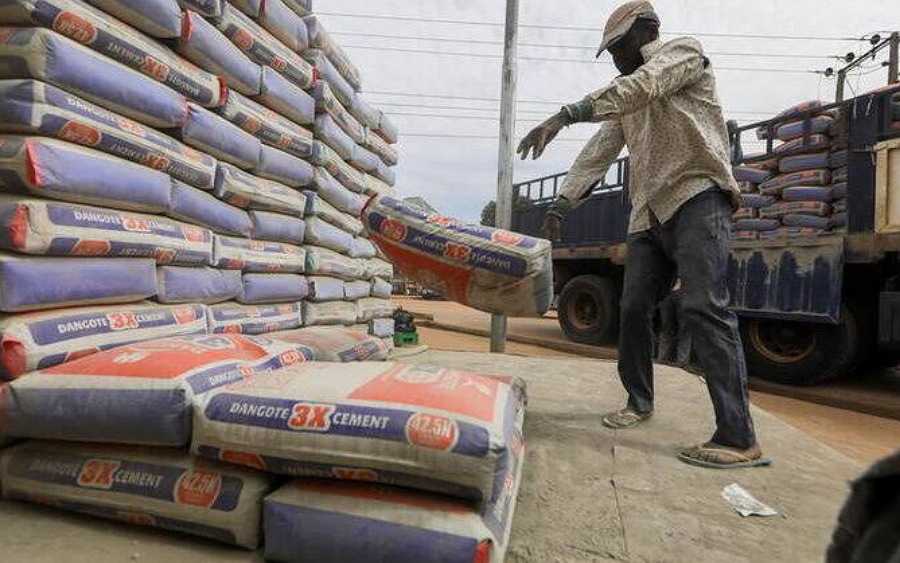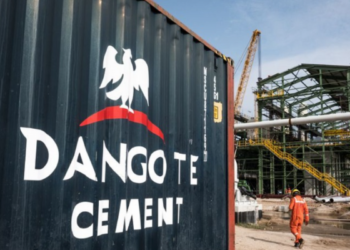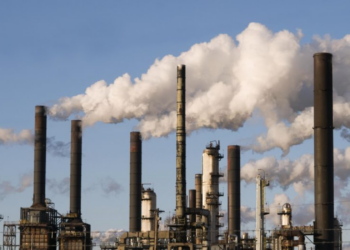Since 2023, the business environment has faced significant challenges, including high inflation, fluctuating interest rates, and volatile exchange rates.
Just like other sectors, such as consumer goods and ICT, which have negatively been affected by the 2023 policy shifts, the industrial sector has not been left out.
Three leading companies in the sector, BUA Cement, Dangote Cement, and Lafarge (WAPCO) have recently released their Q2 2024 results showing a decline in profit margins, despite impressive revenue growth.
In 2023, pre-tax profit on average declined by 25%. The decline continued and accelerated, with the pre-tax profit margin dropping by 49% YoY in the first half of 2024.
A substantial drop in profit margins might indicate underlying issues such as rising costs of sales, high interest expenses, falling sales prices, or operational inefficiencies.
However, it is equally important to consider the companies’ overall performance and other key factors that might influence their long-term prospects.
Shareholder Returns Context
Amidst the challenges faced in 2023, the share prices of these companies have remained resilient, delivering decent returns to shareholders.
In 2023, the companies recorded an average year-to-date (YtD) share price gain of 17.68%. By the end of Q1 2024, this gain had surged to 61%, and it stands at 45.25% as of the close of trading on August 7, 2024.
In 2023, BUA Cement was the exception with a decline of 0.77%, while Lafarge (WAPCO) led with a YtD gain of 31.25%, followed by Dangote Cement with a 22.57% gain.
Dangote Cement: By the end of Q1 2024, Dangote Cement’s share price had surged to N686.70, representing an 115% YtD gain.
This increased its market capitalization to N11.7 trillion, making it the most valuable stock on the NGX.
Given the last annual dividend payout of N30 per share, the stock currently offers a dividend yield of 5.08%, leading to a total return of 89%. Dangote Cement has consistently paid dividends over the past five years.
BUA Cement: The Company recovered from its 2023 decline, posting a better YtD return of 48% in Q1 2024 and is currently at a YtD gain of 33%.
Its market capitalization currently stands at N4.7 trillion, making it the fourth most valuable stock on the NGX. BUA Cement reduced its dividend payout to N2 in 2023, and currently offers a dividend yield of 1.3%, bringing its total return to 34.3%.
Lafarge (WAPCO): In contrast, Lafarge (WAPCO), which had the best performance in 2023, is lagging its peers in 2024 with a YtD gain of 18%, which is below the inflation rate. However, the stock offers the highest dividend yield (6%), which gives a total return of 24%.
Financial Performance
In the first half of 2024, the combined revenue of the three companies reached N2.43 trillion; a 77% increase compared to the previous year and accounting for 79% of their combined revenue for 2023.
Dangote Cement holds a dominant market position, generating N1.76 trillion in revenue, which represents about 73% of the total combined revenue.
- The fact that the first half of 2024’s combined revenue accounts for 79% of the total revenue for 2023 suggests that the companies are on track to achieve, or even exceed, their previous year’s revenue figures.
The growth in revenue can be attributed to an increase in product prices.
For instance, Dangote Cement’s growth in revenue was primarily driven by a 79.7% year-on-year increase in the average price of cement and a 3.81% rise in sales volume.
Profit Margin Analysis
However, despite the impressive revenue growth, profit margins continued to decline through 2023 and into the first half of 2024.
- The Average Gross Profit Margin was down by 913 basis points (bps) in the first half of 2024
- The Average Operating Profit Margin declined by 840 basis points (bps).
- Average Pre-tax Margin declined by 1,478 basis points (bps).
- The Average Net Income Margin declined by 1,180 basis points (bps).
The declines indicate that increasing costs are substantially impacting overall profitability as reflected in the profitability margins.
The financial statements of these companies reveal that the decline in profit margins is closely linked to increased costs of sales, higher interest expenses, and foreign exchange losses.
- WAPCO recorded the smallest decline in gross profit margin, decreasing by 4.5%, and retained around 49% of its revenue as gross profit.
- In contrast, BUA Cement saw the most substantial decline, with its gross profit margin falling by 37% to a low of 30%.
- Dangote led the sector, maintaining a robust gross profit margin of over 50%, though this represents a decline of 12%
Despite maintaining a strong gross profit margin, the pre-tax profit and margins declined driven by rising interest expenses and foreign exchange losses.
In the first half of 2024, the companies reported an average pre-tax margin of 14%, down from 19.7% in 2023.
The combined interest expenses surged by 135% YoY to N141.5 billion, while the combined foreign exchange losses surged by 126% YoY to N261.2 billion.
Dangote Cement accounts for over 85% of the combined figures on average. Its foreign exchange loss surged to N201.3 billion, while interest expenses rose to N13.2 billion in the first half of the year.
These financial pressures affected its profit margins. Asserting this, the company in its first half year 2024 earnings release stated: “Our lower EBITDA margin was impacted by the significant devaluation of the Naira compared to the same period last year, resulting in a significant increase in both our variable and fixed costs.”
Also, WAPCO attributes their decline in profit after tax and margin to foreign exchange losses. Commenting on its Q2 2024 results, Lolu Alade-Akinyemi, CEO of Lafarge Africa, stated, “We sustained net sales growth in Q2 2024 but saw the first half year 2024 PAT decline 17.3% versus the previous year due to foreign exchange losses resulting from Naira devaluation in the first half year 2024.”
The notes to its Q2 2024 reveal that Lafarge (WAPCO) saw its foreign exchange losses hit N19.909 billion in the first half of 2024, compared to zero in the same period the previous year.
Valuation Analysis
The companies appear to have high valuations based on their earnings multiples. The companies’ average price-to-earnings ratio of over 48x indicates that investors expect significant future earnings growth.
Lafarge (WAPCO) has the lowest price-to-earnings ratio at 13x, suggesting it may be relatively undervalued compared to Dangote Cement’s 22x and BUA Cement’s 109x.
Dangote Cement, with a P/E ratio of 22x, sits between the high valuation of BUA Cement and the low valuation of WAPCO. Investors might see it as a balanced choice, offering a mix of growth potential and relative stability.
The price-to-book ratio and price-to-sales metrics appear to support the earnings multiple valuations, with an average most recent quarter price-to-book ratio of 5.8 and a trailing twelve-month price-to-sales ratio of 4.65x. BUA Cement has the highest price-to-book ratio.
This indicates that investors are generally bullish on the prospects of these companies. This optimism is reflected in their willingness to pay a premium relative to book value and sales.
While the high valuations reflect strong investor confidence and growth expectations, the declining profit margins due to increased costs and foreign exchange losses are a significant concern.
Balancing optimism with a realistic assessment of operational challenges will be key to making informed investment decisions.
Investors should remain cautious, keeping an eye on cost management strategies and external economic factors that could further impact profitability.














.gif)






